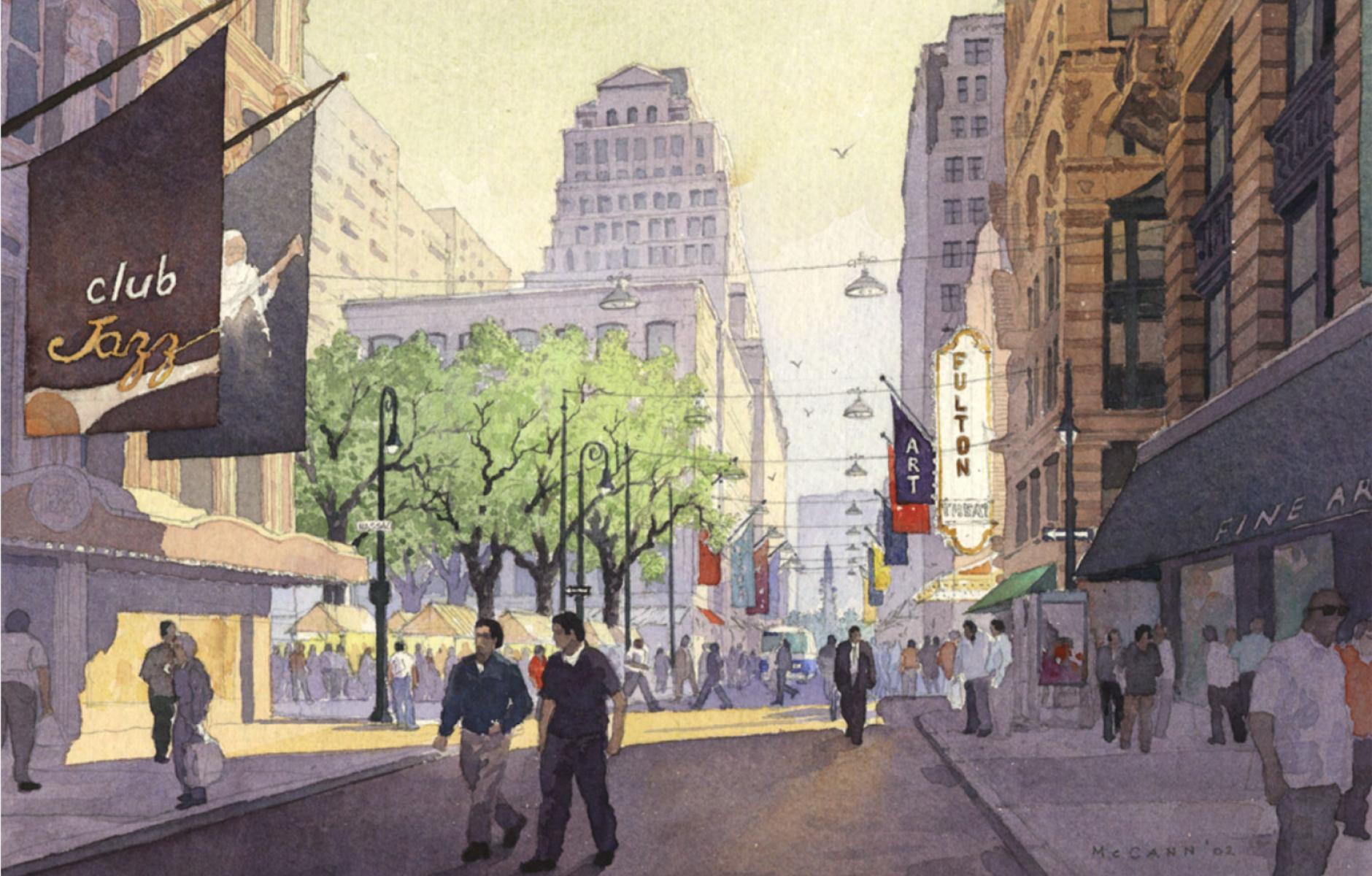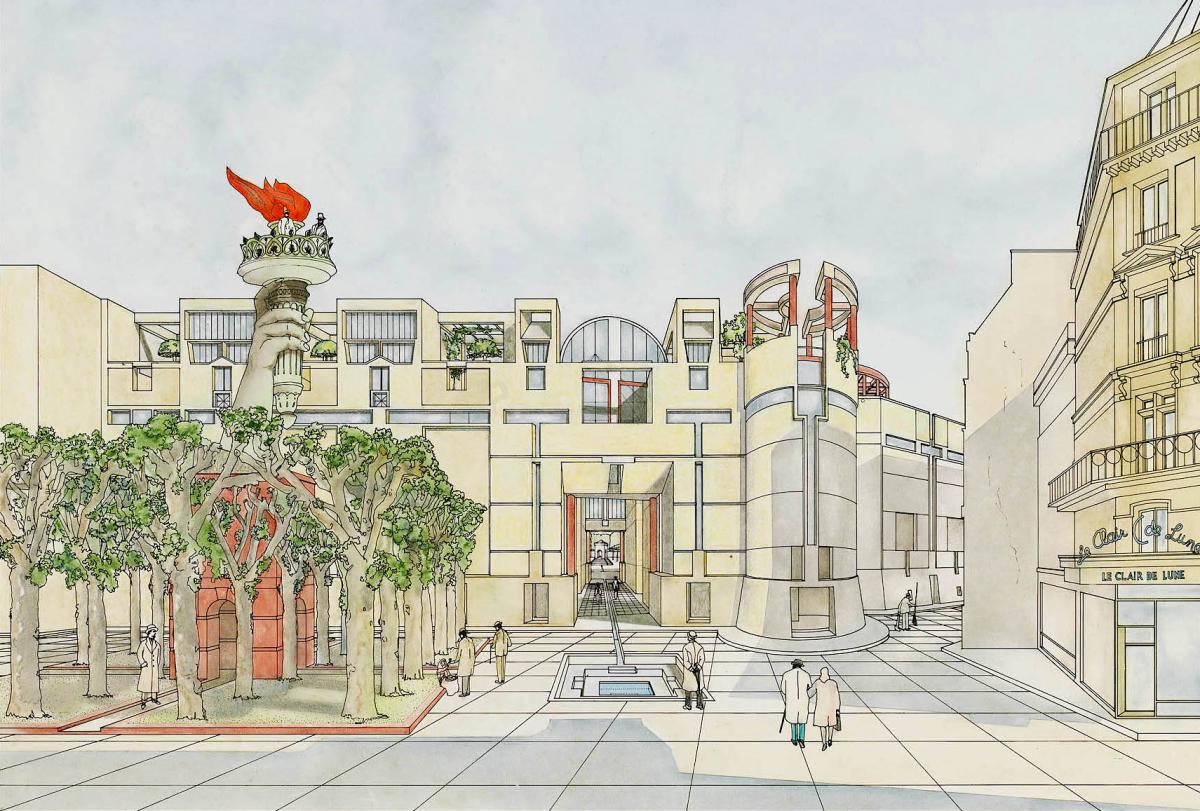
A landmark work of architecture and urbanism
Space & Anti-Space is a cogent, stimulating, explication of forty years of ideas and competition-winning urban projects by CNU Athena Award winners Steven Peterson and Barbara Littenberg. Unlike many books on urbanism that favor either theory or practice, Space & Anti-Space is a compendium that is thick with the integration of ideas and urban projects. Heavily illustrated and graphically flamboyant, the book is a must for architects, urban designers, planners, and students.
The work of Peterson, Littenberg Architects resides at the intersection of urban design and architecture that is typically referred to as urban intervention. Contrary to what most architects assume, urban design is not just large-scale architecture. Conversely, it is also not small-scale planning. Rather, as practiced by Peterson, Littenberg, it is the intimate comingling of architecture and urbanism. This sensibility is especially important today as architecture drifts further and further into narcissistic anti-urbanism.
The articulation of architecture from the city is not a new phenomenon. Both classicist and modernist architects have favored the design of highly crafted architectural objects over urban design. Both may have valued interior space, but rarely urban space, and as Steven Peterson points out, space is the primary medium of urban design. Thus, it is clear why the civic realm of urban space has disappeared from our cities. This book points to a timely way of understanding the relationship between architecture and the city. The work and ideas of Steven Peterson and Barbara Littenberg are presented cleanly and forcefully. Indeed, the virtuosity of their projects at the intersection of architecture and urban design is unique today. Space and Anti-Space should serve as both a reminder of the rich historic relationship between architecture and the city, and as an exemplar of possibilities---the simultaneous presence of assertive architecture and legible urban space.
Space & Anti-Space is organized in four parts. The first part, “Architectural and Urban Space,” occupies about one-third of the book and outlines its theory. (It is the only part not illustrated by the authors’ own work.) This section, and therefore the book, is surprisingly introduced by a brilliant essay about Mies van der Rohe—perhaps the most insightful piece ever on Mies, and a perfect introduction. This is followed by seven sub-parts dealing with spatial theory. This first part alone would make a substantive book or separate volume, but it provides an invaluable background for the balance of the book.
The second part, “The Urban Fabric,” is not really about urban fabric per se, as it might be extolled by Leon or Rob Krier. Rather, these two essays are about Colin Rowe, education, and the principles of urban design. The first is titled “Towards a Standard Model of Urban Form.” There is nothing standard about it, however. This is a very complex set of ideas that might sustain a major symposium, imbued with insight and without boredom. The second essay is, in contrast, a very clear didactic about the design of urban form.

The third part, “Shaping Places,” utilizes two Peterson, Littenberg projects—their competition-winning scheme for the rebuilding of Les Halles in Paris, and their urban design plan for lower Manhattan—to illustrate previously discussed urban design principles. Their virtuoso project for Les Halles is full of inventive graphics and the same scale comparisons to Leon Krier’s project are instructive. And a plan for Lower Manhattan? Really? Yes, really! This award-winning scheme exploits the cacophonous form of Lower Manhattan by providing a series of what James Tice might call micro-urbanism interventions collaged within a revised urban and programmatic framework.
The fourth part of the book, “Towers and Texture,” is indeed about urban fabric and the intermingling of towers, beginning with the Peterson, Littenberg scheme for the World Trade Center site. This was the only scheme for the site that simultaneously accommodated skyscrapers and integrated and extended the urban fabric of the surrounding area—something that Rockefeller Center achieved, but even the original twin towers plan did not, nor did any of the other proposals for the World Trade Center site. There is no more startling example of the mindless hegemony of architecture over the city than the actual built World Trade Center in New York—at least until Hudson Yards is fully built. The architecture of Rockefeller Center is simple, but the buildings are assertive and related to each other. They are also related to the city—to the spatial structure of the city—and they define one of the most beautiful urban spaces in the world. Rockefeller Center is timeless. In contrast, the World Trade Center is like a junkyard for once-trendy architectural toys. Future generations will probably marvel in bewilderment at the urbanistic incompetence of the project. Why did this happen when there was a better alternative? The World Trade Center could have had another of the world’s most beautiful urban spaces, but it does not. We should ask ourselves: why did this not happen?
The final essay of the book returns to operative urban design theory of streets, blocks, and the fabric of city making with comparative examples. Space & Anti-Space is a veritable handbook of urban design, and the best book on architecture and urbanism in decades. This is much needed today as too many architects are still intent on pursuing ever increasing levels of architectural novelty at the expense of the city. Indeed, most architects neither understand nor care about urban design and the city. Fortunately, Steven Peterson and Barbara Littenberg are not among them. Their projects are an inspiration for what could be, and what ought to be, not for what is. This is not an easy book for the uninitiated; its richness is almost overwhelming; it is, however, a rewarding treasure trove of ideas for those who love architecture and the city. It deserves to be studied carefully by students, architects, urban designers, planners—and even non-professionals.
Space & Anti-Space: The Fabric of Place, City, and Architecture, by Steven Peterson and Barbara Littenberg, 2020, ORO Editions.




